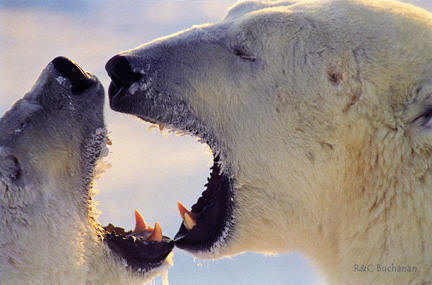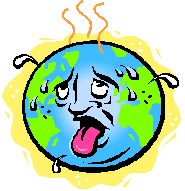|
|
|
Competition: During breeding season, male polar bears compete with other males when looking for potential mates. Some males travel long distances in order to find optimal mating conditions.
Predation: The picture at the bottom left was taken from Polar Bears International. The bear's sharp teeth aid in chewing during meal time. Polar bears that have reached maturity, generally consume only the fatty portions of their meal. This is characteristic is important for regulating body temperatures. However, the remaining meat does not go to waste; in fact, young cubs act as scavengers and finish what is left over. Nutritional habits such a these are important to cub survival. When cubs are young, they are not as efficient in capturing their own prey. Thus, if left over food was not readily available to young cubs, they would likely starve. Luckily, polar bears do not have to worry much about predation. Because polar bears are nearly the largest bear in the family ursidae, and remain as one of the largest mammalian animals, very few, if any organisms prey upon the polar bear. However, if predation does occur, predators are of equal or greater complexity. Predators of Ursus Maritimus are usually members of the family ursidae or human beings. |
Environmental
Interactions: As the climate continues to get warmer, the sea ice will likewise begin to disassociate and disappear. Eventually, the lack of ice cover will create major problems for organisms, such as the polar bear. The polar bear's preferred ecological niche is near the northern regions of highly concentrated sea ice. For hunting purposes, polar bears rely on areas with abundant ice. Without annual ice, polar bears will lose their ability to feed and hunt and will eventually be forced on the mainland. As you can see, a domino affect is slowly beginning to occur. As the climate warms, holes in the sea ice where seals breath and polar bears typically feed will begin to disappear. As more and more polar bears move onto land, competition for food will begin to increase. In addition, the likelihood of finding food along the coastline will probably be low as well. Thus, low food intake will likewise result in inadequate adipose stores. Furthermore, lower fat consumption and food intake will result in reduced energy. Since polar bears are very large, the energy required to carry out daily activity is large as well. A decline in energy and overall body mass will eventually effect the polar bears reproductive productivity and may even result in death.
|





